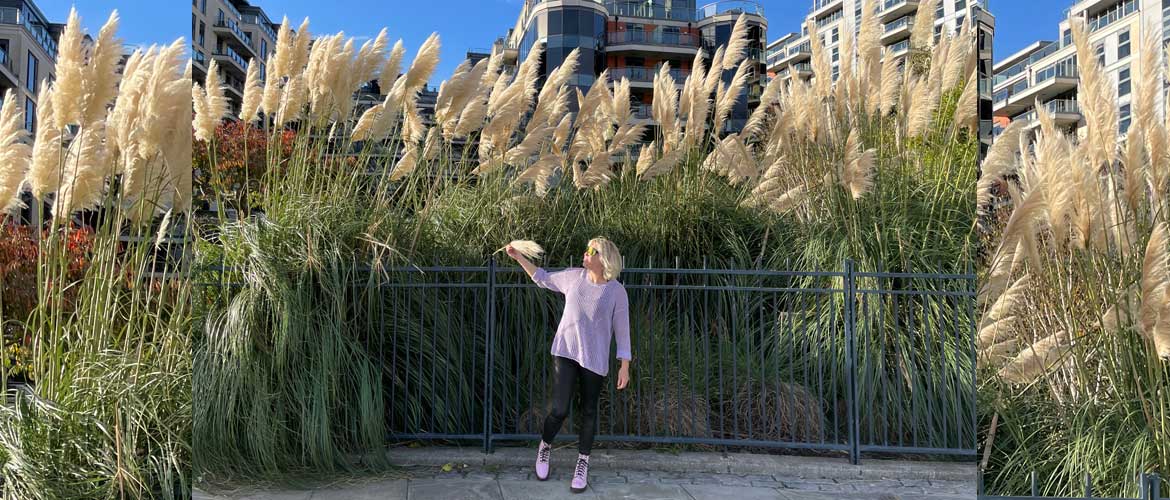Those plumes – such showstoppers. For me spotting pampas grass (Cortaderia selloana) for the first time was equal to love at first sight. The plumes are so glamorous so large so … just there. But all is not well in pampas grass land.

As the name implies this grass is from South America, including the Pampas region. It’s not only me finding those plumes irresistible. In the late 19th century a nurseryman called Joseph Sexton created an industry out of them in 1872 in California. Using his initiative he imported seeds of pampas grass from Argentina and raised hundreds of plants.
He decided to focus on platinum white plumes (other hues include mauve, grey and taupe). Got the idea to send samples to wholesalers in San Francisco and New York. The New York wholesaler sent some to Europe, and sold out immediately. He put Goleta, California on the map, made the town prosperous too.

He did brilliant business, until it was discovered that the plumes were highly flammable. Dollars stopped coming in not long afterwards and his venture ceased in 1900. Pampas grass stayed around though. Today it can be seen here and there and everywhere. But Cortaderia in Argentine Spanish refers to razor sharp, it’s not a pleasant plant to deal with, especially as it matures.
It also has huge roots, making it difficult to remove, or just move. Then the poor plant went out of fashion around 10 years ago. Not to mention the swingers’ association. Additionally there’s the invasive aspect in countries with mild winters. Deary, deary me. For good and for bad, I live in an unfortunate climate. Inspite of it all I would seriously consider pampas grass in a huge planter.








